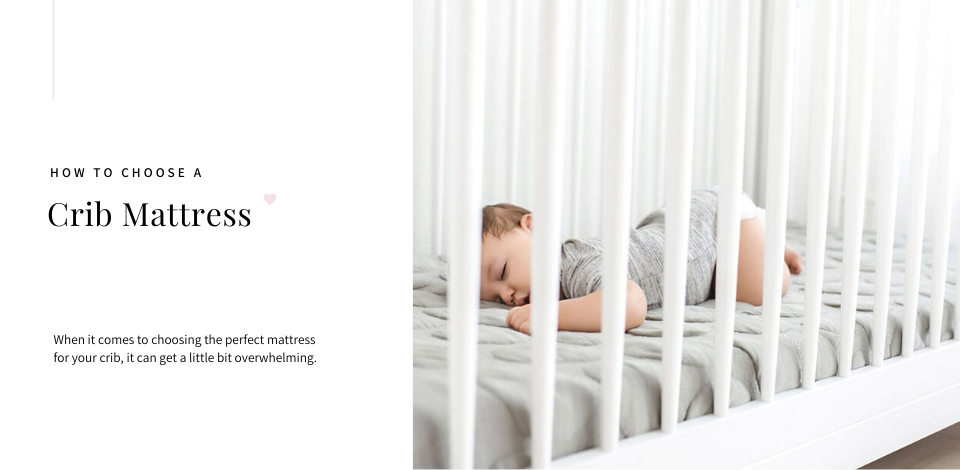How to Choose a Crib Mattress
Jump to Section

When it comes to choosing the perfect mattress for your crib, it can get a little bit overwhelming. With so many options out there, parents often find themselves Googling the differences between the materials used inside the mattress and which one will provide the best support for their little one. We’re here to help walk you through some of the things to consider when choosing a mattress for your little one’s crib. The biggest considerations for parents are typically the following: Dual Sided versus Singular, Waterproof versus Water-Resistant, what are the materials inside the mattress, and finally, will it fit?
Dual-Sided Mattresses
Let’s start by talking about mattresses that are dual-sided versus mattresses that aren’t. A dual-sided mattress offers a firmer infant side and a softer toddler side. A firmer mattress is recommended for newborns and younger infants as it is better for their development. With a dual-sided mattress, you don’t have to worry about flipping the mattress to maintain the firmness of it – you will only have to flip the mattress once when you transition to the toddler side at 12+ months. With the mattresses that are not classified as dual-sided, you would need to continue to flip the mattress to maintain its firmness. You may also consider buying a non-dual-sided mattress if you are only looking to use the crib as a crib and nothing more, whereas a dual-sided mattress could work better for you if you are planning to transition your crib into a toddler bed as your little one grows.
To learn more about single and dual-sided mattresses, click here.
Waterproof vs. Water-Resistant
Now when it comes to waterproof mattresses versus water-resistant mattresses, you definitely have quite a few options. The benefits of having a fully waterproofed mattress are that you can easily wipe down the mattress if your little one has an accident in the crib and that it won’t seep into the core contents of the mattress as it is fully protected. The downside to the majority of mattresses that are considered fully waterproofed is that you will only ever be able to wipe down the cover as it is sewn onto the mattress, so it cannot be removed to be washed. Some families, feel more comfortable using a mattress that has a removable, washable component. This is where purchasing a water-resistant mattress and then adding a waterproof cover could be more beneficial for you. Adding a waterproof mattress cover is super easy as most of them fit around the mattress just like a fitted crib sheet would, so it still offers ample protection against accidents.
Materials
The materials that are inside your crib mattress are where you will likely see the most variation – from the crib mattresses that we carry, the core contents can range from anything like soybean foam to recycled denim cotton, to a 150-coil count. Let’s talk about a breakdown of some of the different materials for the core contents of the mattress:
Foam - While many mattresses no longer use foam as their core component for their products, some companies offer the Soybean Foam option which uses renewable resources and is more environmentally friendly.Coils - One of the biggest benefits of having a coil-count mattress is that the durability of the mattress is typically higher than the majority of other materials, meaning that you will likely be able to use this type of mattress a lot longer. To learn more about the difference between spring coil and foam mattresses, click here.
Organic Cotton - Organic cotton offers the extra breathability and naturalness that a lot of parents are often looking for in a crib mattress.
How Will It Fit?
Final Thoughts
For further assistance, check out these articles:
Foam Crib Mattresses vs. Spring Coil Mattresses
Dual-Sided vs. Single-Sided Crib Mattresses
Best Crib Mattresses of the Year